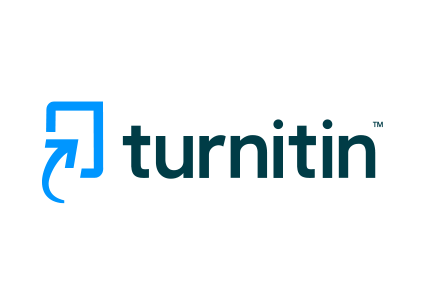Kamala Harris’s Convincing Strategies in Her First Presidential Nomination Speech: A Speech Act Analysis
Kayla Najmi Ihsani(1*), Tuty Handayani(2)
(1) Universitas Islam Negeri Syarif Hidayatullah Jakarta
(2) Universitas Islam Negeri Syarif Hidayatullah Jakarta
(*) Corresponding Author
Abstract
This research investigates the convincing strategies in Kamala Harris’s first speech for the 2024 United States presidential election. It classifies the assertive speech act used to convince the audience. Utilizing Searle and Vanderveken’s theory (1985), a qualitative method was applied. The data were collected through documentation techniques, including watching the speech, identifying relevant utterances, and organizing them on the data cards. The analysis identified 24 utterances from 3,306 words classified into nine categories of assertive acts: claim, inform, assure, admit, predict, criticize, insist, remind, and boast. The most frequently used act was boast (5 instances) emphasized her positive track record. This was followed by criticize (4 instances) aimed at offering better policy alternatives. Both assure (3 instances) and inform (3 instances) used to emphasize her personal background. Other acts that appear (2 instances) were claim, insist, remind, and predict. The least frequent was admit (1 instance) to expose policy mistakes. Notably, only the criticize involved indirect speech acts and non-literal meaning. The rest of the assertive acts are direct speech act and literal meanings. The findings suggest that Kamala Harris mostly uses boast to emphasize past achievements as convincing strategies for gaining audience trust in political campaigns.
Keywords
Full Text:
PDFReferences
Anjani, G. D. (2023). The Analysis of Assertive Speech Act Delivered by Joe Biden and Kamala Harris in DNC Campaign Speech on August, 2020. [Unpublished undergradute thesis, Universitas Jendral Sudirman]. Repository Universitas Jendral Sudirman. https://repository.unsoed.ac.id/20763/
Arif, S., Festi H.K., R.R., & Setyorini, A. (2022). Speech act analysis of Kamala Harris’s victory speech and its contribution for teaching pragmatics. The 2nd Undergraduate Conference on Applied Linguistics, Linguistics, and Literature, 126-133. English Education Study Program, Universitas PGRI Semarang.
Ariska, E., & Yanti, Y. (2022). The expressive speech acts in Kamala Harris` victory speech: A study of multicultural values. Journal of Cultura and Lingua, 3(1), 31–38. https://doi.org/10.37301/culingua.v3i1.105
Ashfira, K. D., & Hardjanto, T. D. (2021). Assertive Speech Acts in Donald Trump’s Presidential Speeches. Lexicon, 7(1), 24-39. https://doi.org/10.22146/lexicon.v7i1.64574
Austin, J. L. (1975). How to do things with words. Clarendon Press.
Breuninger, K. (2024, August 22). Kamala Harris accepts Democratic nomination for president. CNBC Politics. https://www.cnbc.com/2024/08/22/kamala-harris-dnc-speech-presidential-nominee.html
Bureau, U. C. (2024). About the foreign-born population. Census.Gov. https://www.census.gov/topics/population/foreign-born.html
Cattani, A. (2020). Persuading and convincing. OSSA Conference Archive, 11, 1-6.
Creswell, J. W., & Creswell, J. D. (2018). Research design: Qualitative, quantitative, and mixed methods approaches. Sage.
Cristin, N. H., & Handayani, N. D. (2023). Analysis assertive speech act in “purple hearts” movie by Tess Wakefield: pragmatic approach. English Journal of Indragiri, 7(2), 2589–5140. https://doi.org/https://doi.org/10.61672/eji.v7i2.2396
Fatimah, R. N., & Syahriyani, A. (2022). Portrayal of autism in atypical film: Pragmatic language impairment analysis. LiNGUA: Jurnal Ilmu Bahasa Dan Sastra, 17(1), 115-128. https://doi.org/10.18860/ling.v17i1.15673
Khodijah, S. (2020). Illocutionary act in political debate. Journal of Language Intelligence and Culture, 2(2), 141-158. https://doi.org/10.35719/jlic.v2i2.39
Laksono, I. S. S., & Chojimah, N. (2020). Persuasive Strategy in Prabowo’s Political Speech at National Agenda 2019. Nusa: Jurnal Ilmu Bahasa dan Sastra, 15(2), 214-224. https://doi.org/10.14710/nusa.15.2.214-224
McBride, W. (2024, October 16). VP Harris’s tax policy ideas: Details and analysis. Tax Foundation. https://taxfoundation.org/research/all/federal/kamala-harris-tax-plan-2024/
Mohamed, L. S., Becka A. Alper, Scott Keeter, Jordan Lippert and Besheer. (2024, March 21). Majority in U.S. say Israel has valid reasons for fighting; fewer say the same about Hamas. Pew Research Center. https://www.pewresearch.org/2024/03/21/majority-in-u-s-say-israel-has-valid-reasons-for-fighting-fewer-say-the-same-about-hamas/
Mulyana, L., & Engliana, E. (2021). Direct and indirect illocutionary speech acts on Donald Trump’s victory speech in 2016. Inference: Journal of English Language Teaching, 4(1), 60-67. https://doi.org/10.30998/inference.v4i1.6850
Nurlela, H. (2024). Assertive act in Joe Biden’s first interview as President on the 60 minutes Youtube channel. Elite : English and Literature Journal, 11(1), 99–109. https://doi.org/10.24252/elite.v11i1.42120
Pratika, S. (2025). Illocutionary acts in the 2024 ABC news presidential debate between Harris And Trump: A pragmatic study. Jurnalistrendi : Jurnal Linguistik, Sastra, Dan Pendidikan, 10(1), 161–172. https://doi.org/10.51673/jurnalistrendi.v10i1.2378
Putri, M. D. S., & Sunarto, E. (2023). Functions of speech acts in Australian Minister of Foreign Affairs speech. Journal of English Language and Culture, 13(2), 97-104. https://doi.org/10.30813/jelc.v13i2.4028
Ramadani, K. R., & Ardiantari, I. A. P. G. (2023). An analysis of assertive illocutionary acts used by Lianna Fix in Ukraine war news. Journal of Humanities, Social Science, Public Administration and Management (HUSOCPUMENT), 3(1), 22-26. https://www.publication.idsolutions.co.id/journals/index.php/husocpument/article/view/275/68
Riani, F. (2022). An analysis of illocutionary act in avengers infinity war movie. English Language, Linguistics, Literature, And Education Journal (ELLTURE JOURNAL), 4(1), 1-14. https://doi.org/10.30631/ellture.v5i1.35
Searle, J. R. (1969). Speech acts: An essay in the philosophy of language (1st ed.). Cambridge University Press. https://doi.org/10.1017/CBO9781139173438
Searle, J. R. (1976). A classification of illocutionary acts. Language in Society, 5(1), 1–23. https://doi.org/10.1017/s0047404500006837
Searle, J. R., & Vanderveken, D. (1985). Foundations of illocutionary logic. The Press Syndicate of the University of Cambridge.
Sholikhatin, S. (2024). persuasive analysis on “make over” advertisement Instagram caption. Journal of Literature, Linguistics, & Cultural Studies, 2(2), 72–89. https://doi.org/10.18860/lilics.v2i2.3203
Situmorang, F. E., & Handayani, N. D. (2020). Illocutionary act in Anger Management movie. IDEAS: Journal on English Language Teaching and Learning, Linguistics and Literature, 8(1). https://doi.org/10.24256/ideas.v8i1.1424
Yulistiana, F. & Widyastuti. (2022). Assertive illocutionary acts on interruption by Joe Biden in the 2020 first presidential debate. Celtic : A Journal of Culture, English Language Teaching, Literature and Linguistics, 9(1), 135–148. https://doi.org/10.22219/celtic.v9i1.21208
Article Metrics
Refbacks
- There are currently no refbacks.
Copyright (c) 2025 Kayla Najmi Ihsani, Tuty Handayani

This work is licensed under a Creative Commons Attribution-ShareAlike 4.0 International License.










